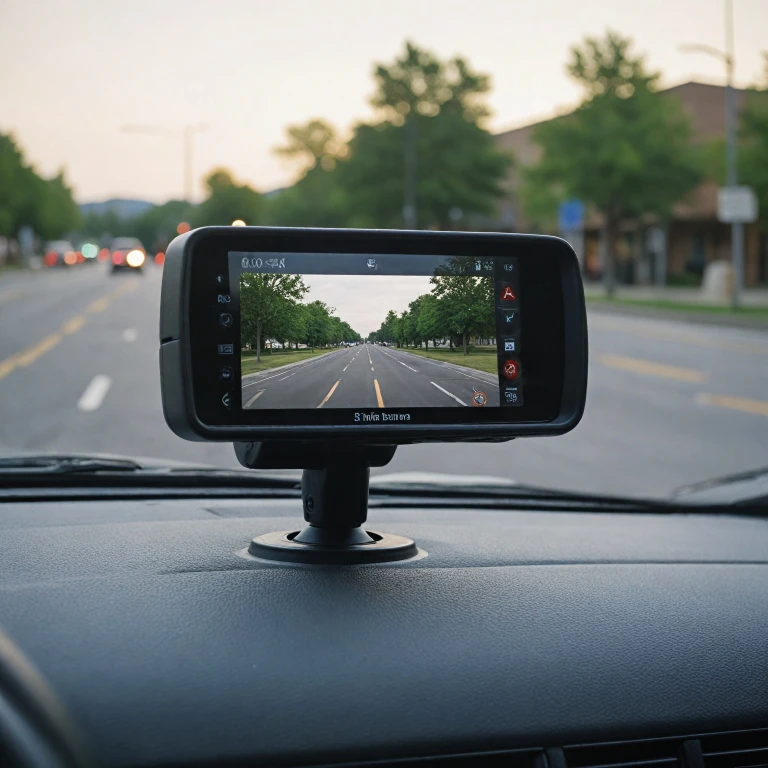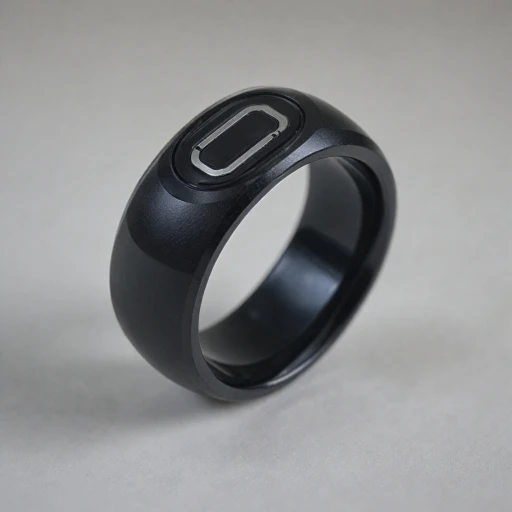
The Basics of Wired Backup Cameras
Introduction to Wired Backup Camera Systems
When considering a backup camera system for your vehicle, it's essential to distinguish between various options available on the market. Wired backup cameras stand out due to their reliability and consistent performance. But what exactly is a wired backup camera system, and how does it differ from its wireless counterparts? A wired backup camera system is comprised of a camera, typically mounted on the rear of a vehicle, connected to a monitor via a physical cable. This allows for a clear and uninterrupted view of what's behind your vehicle, regardless of environmental factors such as interference or obstructions that might affect wireless systems. The camera itself is equipped with essential features to enhance its functionality:- Night Vision: This feature ensures visibility in low-light or nighttime conditions, providing a safer driving experience.
- Waterproof Design: Many wired backup cameras, including those designed for heavy-duty use in trucks and RVs, are built to be waterproof, ensuring durability in adverse weather conditions.
- Multiple Viewing Options: Some systems offer additional cameras or the ability to add more, allowing for a comprehensive rear view and increased safety.
Advantages Over Wireless Options
Comparing Signal Reliability and Performance
When it comes to backup camera options, one of the most significant advantages wired systems hold over their wireless counterparts is the consistent and reliable signal transmission they offer. A key consideration in any backup system is how well it performs under various driving conditions. Wired cameras excel in maintaining a steady connection, unlike wireless backup cameras which can suffer from interference. Interference in wireless systems can originate from various sources, including Wi-Fi networks, smartphones, and other wireless devices. This may cause disruptions in the camera feed, especially when you are navigating tight spaces or require clear, real-time visuals to avoid obstacles such as other vehicles, buildings, or the side of a trailer. On the other side, wired backup systems are designed to deliver a stable video feed to your rear view monitor without the risk of such breaks in transmission, ensuring a reliable view of what's behind your vehicle. For drivers of large vehicles like semi trucks or RVs, this stability is particularly beneficial. The longer lengths involved mean a wireless signal might become spotty, making a wired connection preferable for clear, uninterrupted vision. Additionally, when towing a truck trailer, a wired setup ensures that the backup video feed remains consistent, helping to view safety from all angles. When considering the price, wired systems offer competitive value over time with fewer technological mishaps, which can justify the upfront investment. For more insights on enhancing security capabilities, especially when weighing these wired options against wireless camera solutions, explore this detailed guide. Overall, for those investing in backup cameras for their vehicles, the reliability and seamless performance of wired systems can significantly enhance safety not just in daylight, but with the added advantage of night vision capabilities, they safeguard during nighttime drives, ensuring the camera night vision is always robust and dependable.Installation Process and Considerations
Steps for a Seamless Installation
Proper installation of a wired backup camera system is crucial for optimal performance and safety. While this may sound daunting, it is manageable with some planning and the right tools. Here are some important aspects to consider:- Mounting the Camera: Start by determining the ideal location for your camera at the rear of the vehicle, usually near the license plate to ensure a comprehensive rear view. Ensure the camera is secure and consider its night vision and waterproof capabilities.
- Cable Management: Since the system uses wires, consider the route the cables will take from the camera to the monitor, usually an inch display. Pathways should be neat and protected against wear, especially if installation involves heavy duty vehicles like RVs or semi trucks.
- Installation Tools: Common tools you might need include screwdrivers, a drill for certain mounts, and sometimes additional kits depending on your camera system's requirements. Manufacturers often provide helpful guides - reading these ahead of time can prevent mistakes.
- Linking to the Monitor: Once the camera is securely mounted and cabling is in place, connect the rear view camera to the truck or car's monitor interface, ensuring everything is securely fastened and appears on the screen.
Compatibility with Different Vehicles
Fitting Wired Backup Systems to Various Vehicles
When it comes to integrating a wired backup camera system into your vehicle, compatibility is a key consideration. These systems are designed to be versatile, catering to a wide range of vehicles from small cars to hefty trucks and trailers. Whether you're driving a compact car or a semi-truck, the adaptability of wired systems ensures that nearly any vehicle can be equipped with enhanced rear view safety measures. A crucial component of this process is the selection of a camera that suits the specific needs of your vehicle. For example, certain models offer features such as a night vision camera, perfect for those needing clear visuals after sundown. Similarly, if you're driving a heavy-duty truck or towing a trailer, a robust design with waterproof capabilities might be your priority. This ensures durability and long-term use without the fear of moisture damage. In terms of mounting options, the cameras can be affixed to various positions depending on the vehicle's structure—whether it's a license plate camera mount for standard cars or a customized solution for larger RVS. Monitoring options vary as well, with displays ranging from a simple inch view to larger screens, allowing drivers to select a setup that best fits their comfort and budget. Price considerations are always important; however, investing in wired systems can provide significant value over time. The initial cost might be higher than some wireless camera options, but the reliable performance in terms of consistent image quality and minimal interference can be advantageous. Overall, ensuring that the camera system matches your vehicle specifications optimizes both functionality and user experience, providing peace of mind on the road.Maintenance and Troubleshooting Tips
Tips for Effective Maintenance and Troubleshooting
Regular maintenance is essential for keeping your wired backup camera system in optimal condition. This not only ensures a clear rear view but also contributes to the longevity of your investment. Here are some practical tips for maintaining and troubleshooting your backup camera system:
- Keep the Camera Lens Clean: With exposure to dust, mud, and other environmental elements, the camera lens can become obstructed. Regularly wipe the lens with a soft cloth to maintain clear visuals, especially if your system supports night vision.
- Check the Wiring: Wired systems depend heavily on uninterrupted connections. Periodically inspect the wires for signs of wear or damage, particularly if mounted on heavy-duty vehicles like trucks and RVs.
- Secure the Mount: Ensure the camera and monitor mounts are securely fastened. Vibrations from the road can loosen them over time, impacting view safety.
- Monitor the Display: Keep an eye on the inch display for any signs of malfunction. A fluctuating or blurry monitor could indicate an issue with the camera or the display itself.
- Test Night Vision Regularly: If your system includes night vision, performing regular checks during low light conditions can confirm its functionality.
For those who own more advanced systems, like a waterproof or stock add backup camera, the same maintenance principles apply. Incorporating these simple steps into your maintenance routine can significantly reduce the chances of technical difficulties while on the road.
In troubleshooting, starting with these basics can often resolve common issues quickly. However, consulting specific model manuals or reaching out to customer service can be beneficial for more complex problems.
Enhancing Safety with Additional Features
Boosting Security and Functionality with Extra Features
Incorporating additional features in wired backup cameras can significantly enhance the security aspect of your vehicle. Let’s dive into some of these options that can make a substantial difference in safety and functionality.
- Night Vision: A crucial feature for driving in low-light conditions, night vision technology in backup cameras allows drivers to view the rear area clearly. It enhances visibility, reducing the risk of accidents when backing up at night.
- Waterproof Design: It’s essential for the system to withstand harsh weather conditions. Opting for a vision waterproof camera ensures that the equipment remains functional in rainy or snowy weather, maintaining reliable performance in all environments.
- Wide View Camera: A wide-angle lens increases the field of vision, allowing you to see more of the area around the rear of your vehicle, which is particularly beneficial for truck trailers or larger vehicles like RVs.
- Monitor Size: Choosing an appropriate inch display monitor helps in viewing what the camera captures more clearly. For instance, a larger monitor, such as seven inches or more, can offer a more precise view compared to smaller ones.
- Heavy Duty & Versatile Mount Options: For those with specific needs, such as semi trucks or trucks with trailers, heavy-duty camera systems are essential. These robust systems often come with flexible mounting solutions to accommodate different vehicle structures, including license plate mounts.
- Additional Assistance: Certain camera systems provide alerts and guidelines on the display monitor to assist in parking or reversing, further increasing the level of safety.
These features help in creating a more secure and efficient driving experience. When maintaining your vehicle’s wired backup system, don’t overlook the potential benefits that these added options can bring.












